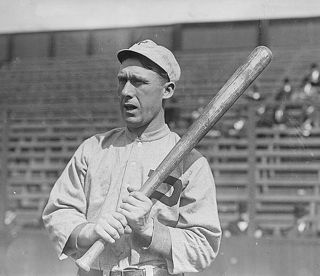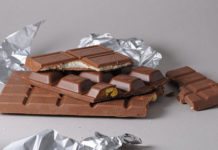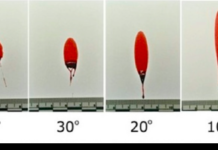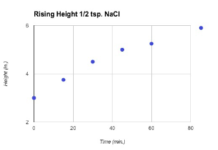 During a game between the Rangers and the Blue Jays on April 21, 2009, home plate umpire Kerwin Danley left the diamond on a stretcher after getting hit in the head by a broken bat. And on April 25, 2009 Susan Rhodes, a 50-year old mother of two, was hit in the head by Todd Helton’s bat during a Rockies–Dodgers game. She suffered two fractures in her jaw, requiring screws to repair it, and ran up more than $7,000 in medical bills that the Dodgers’ insurance carrier may not pay. Rhodes says she isn’t sure if she will attend another Dodger game. And who’s to blame her?
During a game between the Rangers and the Blue Jays on April 21, 2009, home plate umpire Kerwin Danley left the diamond on a stretcher after getting hit in the head by a broken bat. And on April 25, 2009 Susan Rhodes, a 50-year old mother of two, was hit in the head by Todd Helton’s bat during a Rockies–Dodgers game. She suffered two fractures in her jaw, requiring screws to repair it, and ran up more than $7,000 in medical bills that the Dodgers’ insurance carrier may not pay. Rhodes says she isn’t sure if she will attend another Dodger game. And who’s to blame her?
Major League Baseball (MLB) has realized that broken bats have become a major problem. Since July 2, 2009, all MLB teams have collected every cracked, shattered or chipped bat during a game so that the University of Wisconsin’s Forest Products Laboratory can study them. They are trying to better understand why so many bats are breaking and what can be done to solve it.
“This is our biggest effort to have all the clubs; bats collected,” Patrick Courtney, a spokesman for MLB.
Sam Holman, the founder of Original Maple Corporation, a maker of wooden bats, has suggested that some companies could be using inferior wood, and that could be the main reason more bats are faltering.
In the days of Babe Ruth, he and every other player used hickory wood for bats. Now, due to the desire for lightweight bats—for faster bat speed and higher batting averages—ash is the preferred choice of wood for most major leaguers, said Angels second baseman Howie Kendrick.
Others prefer maple. Holman claimed that home run slugger Barry Bonds once told him he preferred how maple didn’t bend, so he didn’t have to compensate with his swing as much as he did with an ash bat.
Maple and ash tend to break in different ways. While ash tends to crack and flake off in smaller chunks, maple tends to fracture in bigger, jagged shards, Lloyd Smith, a mechanical and materials engineer from Washington State University, told livescience.com in 2008.
Smith associated some of the differences in breaking patterns to the structure of the pores, which transport moisture inside the trees used to make bats. Ash is “ring porous”. Inside the wood there is a whole bunch of pores in the grain areas that carry moisture through the tree. However, in the region of the growth ring, where there isn’t any grain, it is more or less solid fiber, said Smith. Good for bats. Unfortunately, the growth ring regions do have weak spots, because voids can concentrate in certain areas. When the ash bat hits a ball, the cell walls collapse in one of these voids and this causes layers of the wood to flake off.
Maple, on the other hand, is “ring diffuse”, meaning its pores are more evenly arranged throughout the wood. “So a characteristic of maple that exists today is the barrel is very durable; you don’t get these flaking kinds of failures in maple that you did in the ash bats,” Smith explained to livescience.com.
| Related stories: Playing in Blood, Sweat, and Saliva; The Science behind Baseball |
Smith suggested requiring thicker handles, like those on the older baseballs bats, to reduce the number of broken bats. Abby Smith

This work is licensed under a Creative Commons Attribution-NonCommercial-NoDerivs 3.0 Unported License














With baseball on the minds of many, this is a very timely and well-written story.
Smith associated some of the differences in breaking patterns to the structure of the pores, which transport moisture inside the trees used to make bats. Ash is â:-??ring porousâ:-??. Inside the wood there is a whole bunch of pores in the grain areas that carry moisture through the tree. However, in the region of the growth ring, where there isnâ:-??t any grain, it is more or less solid fiber, said Smith. Good for bats. Unfortunately, the growth ring regions do have weak spots, because voids can concentrate in certain areas. When the ash bat hits a ball, the cell walls collapse in one of these voids and this causes layers of the wood to flake off.
I thought it was a very good article:good
:good I didnt know broke bats cause so much grief and pain. This info is vital
after reading this article i was reminded of the time i also got hit in the head with a baseball bat when i was 3.. it hurt…..:shy:arhh
I have been playing baseball for almost 6 years and never had this problem ever so of you know what you are doing there should be no reason for being afraid of a baseball or bat.